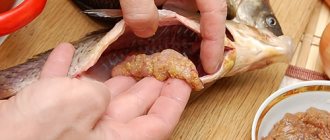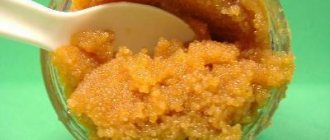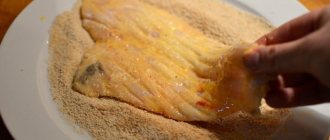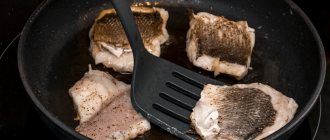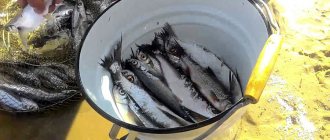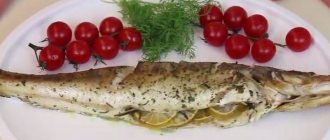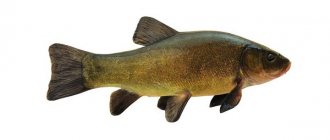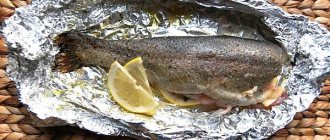The benefits of crucian carp meat
Crucian carp, which belongs to the cyprinid species, lives in rivers and lakes, that is, in fresh water that does not contain salts, iodine and other aggressive elements, as in the seas and oceans. Therefore, its meat is softer, harmless and easily digestible. Fish contains virtually no fat and consists of 90% protein.
River fish meat is dietary, it is allowed to be consumed on a diet, during fasting, and in the postoperative period, when the body is weakened. Crucian carp is quickly digested, spending a minimum of body energy on breakdown. That is why it satisfies hunger for a short time and after 2 hours you want to eat again.
Crucian carp contains a lot of calcium and phosphorus, which is beneficial for bone mass, hair, and nails. If a person breaks an arm or leg, he should add freshwater fish dishes to his diet, cooked in various forms with a side dish of oatmeal or barley porridge, then the recovery process will go faster.
Vitamins A and E contained in crucian carp promote the breakdown of fat. This is especially important for people struggling with excess weight, fatty plaques in blood vessels and blood cholesterol levels.
Composition and calorie content of fish
Freshwater fish contains a lot of useful substances that the body needs every day. If a person should, for health reasons, give up animal protein in the form of pet meat, then fish is an alternative to red meat, which is difficult to digest.
The table shows data per 100 g of product.
| Macronutrients | Vitamins | Minerals |
|
|
|
Rules for choosing crucian carp
How to fry crucian carp in a frying pan so that you get a tasty dish without a bitter aftertaste will be discussed later in the article.
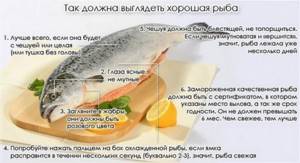
Fish is a specific product, which can easily be poisoned if you eat a stale piece. It is best to buy live fish from an aquarium in a supermarket, but if this is not possible, you should remember a few simple rules, based on which the fish in the house will always be fresh and harmless to health.
- fresh fish has clear black eyes with visible whites, if the fish has cloudy, sunken, dried out eyes, its expiration date has long passed;
- the bones of fresh fish are difficult to separate from the meat; if the bone separates easily, the decomposition process has begun;
- the fin and gills of the fish should remain red, in crucian carp they are burgundy, in spoiled fish these organs are gray;
- a fishy smell in fish is a sign of the beginning of decomposition; fresh fish smells like sea water;
- if we are talking about choosing a fillet, then you should not take a frozen product, ice hides all signs of decomposition, even if the fillet is packaged, you need to put a little pressure on the fish, with a fresh product the meat will straighten out immediately, with a rotten product it will leave a dent;
- if it is possible to find out the origin of crucian carp, then it is better to give preference to river fish than lake fish; the latter option retains a persistent smell of mud.
As for mucus, this is unacceptable for sea fish, but for crucian carp it is normal. If mucus on the scales confuses you, then you need to resort to other methods of quality control.
How long does it take to fry crucian carp?
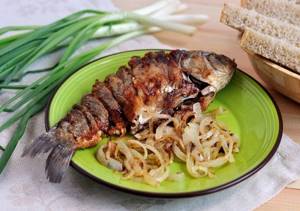
Crucian carp are not very often bought at the market or in the supermarket. The most popular fish are those caught with one’s own hands in a pond. Let's find out how long to fry crucian carp in a frying pan. The duration of its heat treatment can vary from 15 to 20 minutes. It all depends on the size of the crucian carp, how you prepared it for heat treatment and what effect you want to achieve.
As a rule, crucian carp are fried until golden. In order for the fish to turn out exactly as in the picture in the cookbook, it is recommended to use wheat flour for breading. How long to fry crucian carp in flour in a frying pan? On each side the fish is fried for about 6-7 minutes. Let's focus on color. A rich golden hue indicates that the crucian carp needs to be turned over.
On a note! If you don’t like fried fish, at the very end of cooking, cover the pan with a lid and simmer the dish for another 3-4 minutes. In this case, the fish fillet will be steamed.
Now let's discuss the basic culinary subtleties of cooking crucian carp. Small fish can be safely fried whole, but large fish are first cut into portions.
If necessary, defrost the crucian carp in advance. But keep in mind that fresh fish is much tastier and more aromatic. The scales are removed from it using a special brush. For convenience, we move in the direction from the tail. Next, the head, fins and tail are removed.
On a note! The freshness of the crucian carp is evidenced by the bright burgundy hue of the gills, as well as transparent pupils.
Then they proceed directly to cutting the carcass. Carefully rip open the abdomen and clean out the insides. It is undesirable to damage the gallbladder. The leaked liquid will give the fish fillet a bitter taste. If this does happen, immediately rinse the fish under running water. Also, the black film is removed from the inside of the belly; it also adds unnecessary bitterness.

Should you pickle crucian carp? This is a personal matter for everyone. Simply rub the fish thoroughly with salt and ground allspice. There are people who do not like this kind of fish because of the large number of small bones. So that they are less felt and you do not injure the esophagus during the meal, cuts are made on the back of the crucian carp. The distance between them should not exceed 10 mm.
Advice! To cook a large whole carcass you will need more salt than for steaks.
To improve the taste, fried crucian carp can be stuffed with chopped onion rings, lemon slices, and sprigs of fresh herbs. Parsley and dill are ideal. But there is another aromatic spice that amazingly emphasizes the taste of fish fillet. We are talking about rosemary. It can be used either ground dried or fresh.
A cut carcass of crucian carp is often cooked in batter. In addition to flour, you will also need beaten eggs. The crucian carp is fried in a large amount of refined vegetable oil. If any is absorbed, do not forget to add a little more. The main thing is that the fish does not burn in a dry frying pan.
Advice! Remove excess oil with a paper towel. Place the fish from the pan onto a napkin and leave for a couple of minutes.
Rules for frying crucian carp
The following tips will tell you how to fry crucian carp in a frying pan without bones. A huge percentage of successfully cooked fish comes from pre-cooking. You shouldn’t rush to throw the fish into the frying pan; it’s better to spend time cleaning it, and then enjoy the taste without having to remove uncooked bones and scales from your mouth every time.
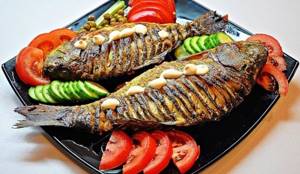
- Having chosen fresh crucian carp, first you need to wash it well under warm water. Warm water makes it easier to wash away mucus.
- Next, you need to thoroughly clean it, holding it by the tail and scraping the scales from the tail to the head. The scales on the belly are the most stubborn, and the fins get in the way; they can be cut off.
- The gills of crucian carp absorb a huge amount of oil; they can be removed separately or together with the head. There is no valuable meat in the head, and they leave it only for beauty.
- The next step is gutting. Using a sharp knife, make an incision on the belly from the throat to the anus. Fresh fish is difficult to cut due to the remaining elasticity of the meat, so the knife must be sharp. After cutting the fish, you need to carefully remove the insides without damaging the gall bladder and caviar, if any. You should also remove the most bitter part of the fish - the black film inside.
- Next, cuts should be made across the back, approximately every 1-1.5 cm, to allow access to the temperature that will soften the bones.
- If necessary, remove the unpleasant odor using one of the methods described in the next chapter.
- Dip the fish generously in flour, pour it into the slots and fry in a frying pan with butter until cooked.
How to prepare fish
Before frying, the fish must be cleaned and gutted. Start by removing the scales. It is large in crucian carp and can be removed quite easily. To prevent the fish from “running away” during cleaning, dip your wet fingers in salt. No, no, she doesn't need to peel.
